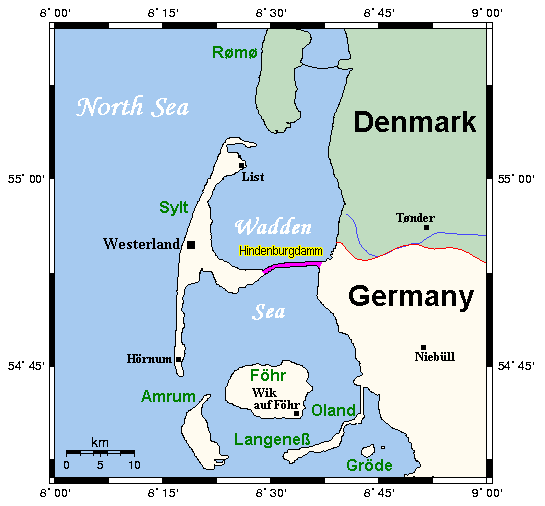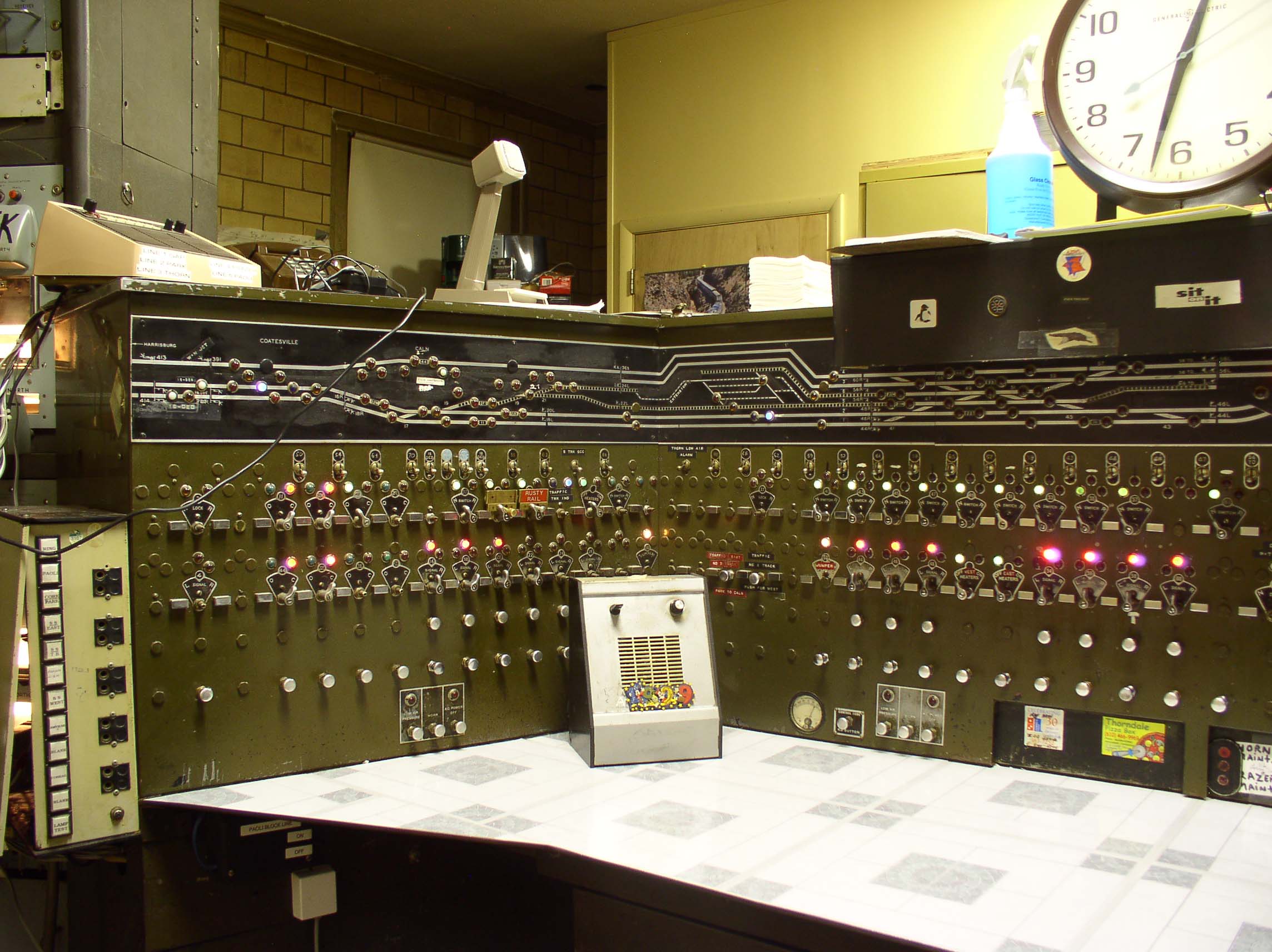|
Block Posts
A block post in railway signalling is the signal box at one end of a block section. German practice In Germany, block posts are known as ''Blockstellen'' (abbreviation: ''Bk'') and are defined as railway facilities on the open line that mark the end of a block section, as part of a block system. They usually have a home signal in each direction and on each running line. They are mainly found where the distance between two railway stations is greater than average. In the early years of the railway, block posts were local signal boxes manned with block post keepers. Today there are only a few of these classic, railway staff-operated block posts. Their function has been largely superseded by equipment that forms part of an automatic block signalling (''Selbsttätigen Streckenblocks'' or ''Sbk'') system or by a central block post in a station signal box at one end of the section between two stations. Block posts are described in the German railway regulations, the '' Eisenbahn-Bau- ... [...More Info...] [...Related Items...] OR: [Wikipedia] [Google] [Baidu] |
Hindenburgdamm 01
The Hindenburgdamm or Hindenburg Dam is an 11 km-long causeway joining the North Frisian Islands, North Frisian island of Sylt to mainland Schleswig-Holstein. Its coordinates are . It was opened on 1 June 1927 and is exclusively a railway corridor. The companies that built the Hindenburgdamm, a job that took four years, were Philipp Holzmann AG of Frankfurt, working from the mainland, and Peter Fix Söhne of Duisburg working from Sylt. A train trip along the causeway takes about 10 minutes, and the time between the auto terminals at Niebüll on the mainland and Westerland (Schleswig), Westerland on Sylt is about 30 minutes. The Hindenburgdamm is part of the railway line known as the ''Marschbahn'' ("Marsh Railway"), which is Double track, double-tracked along much of the route, although there as yet exists a Single track (rail), single-tracked stretch. On the causeway is a signal box. The rail line is not electrified making the use of diesel locomotives necessary. Trains com ... [...More Info...] [...Related Items...] OR: [Wikipedia] [Google] [Baidu] |
Railway Signalling
Railway signalling (), also called railroad signaling (), is a system used to control the movement of railway traffic. Trains move on fixed rails, making them uniquely susceptible to collision. This susceptibility is exacerbated by the enormous weight and inertia of a train, which makes it difficult to quickly stop when encountering an obstacle. In the UK, the Regulation of Railways Act 1889 introduced a series of requirements on matters such as the implementation of interlocked block signalling and other safety measures as a direct result of the Armagh rail disaster in that year. Most forms of train control involve movement authority being passed from those responsible for each section of a rail network (e.g. a signalman or stationmaster) to the train crew. The set of rules and the physical equipment used to accomplish this determine what is known as the ''method of working'' (UK), ''method of operation'' (US) or ''safeworking'' (Aus.). Not all these methods require the use ... [...More Info...] [...Related Items...] OR: [Wikipedia] [Google] [Baidu] |
Signal Box
In signal processing, a signal is a function that conveys information about a phenomenon. Any quantity that can vary over space or time can be used as a signal to share messages between observers. The ''IEEE Transactions on Signal Processing'' includes audio, video, speech, image, sonar, and radar as examples of signal. A signal may also be defined as observable change in a quantity over space or time (a time series), even if it does not carry information. In nature, signals can be actions done by an organism to alert other organisms, ranging from the release of plant chemicals to warn nearby plants of a predator, to sounds or motions made by animals to alert other animals of food. Signaling occurs in all organisms even at cellular levels, with cell signaling. Signaling theory, in evolutionary biology, proposes that a substantial driver for evolution is the ability of animals to communicate with each other by developing ways of signaling. In human engineering, signals are typi ... [...More Info...] [...Related Items...] OR: [Wikipedia] [Google] [Baidu] |
Block Section
Absolute block signalling is a British signalling scheme designed to ensure the safe operation of a railway by allowing only one train to occupy a defined section of track (block) at a time. This system is used on double or multiple lines where use of each line is assigned a direction of travel. A train approaching a section is ''offered'' by a signalman to his counterpart at the next signal box. If the section is clear, the latter ''accepts'' the train, and the first signalman may clear his signals to give permission for the train to enter the section. This communication traditionally takes place by bell codes and status indications transmitted over a simple telegraph wire circuit between signalmen using a device called a ''block instrument'', although some contemporary block working is operated wirelessly. This process is repeated for every block section a train passes through. The absolute block system does not replace the use of any other form of signalling, such as fixed ... [...More Info...] [...Related Items...] OR: [Wikipedia] [Google] [Baidu] |
Home Signal
The application of railway signals on a rail layout is determined by various factors, principally the location of points of potential conflict, as well as the speed and frequency of trains and the movements they require to make. Non-provision of signals Before discussing the application of signals, it is useful to highlight some situations where signals are ''not'' required: * Sidings generally need not be signalled, as all movements within them are made cautiously at low speed. * Tram lines frequently employ "running on sight" without any signals (similar to road traffic). * Where movement authorities are passed to drivers exclusively by means other than fixed signals (e.g. by written or verbal authority), token, or cab signalling. Purpose of signals Signals exist primarily to pass instructions and information to drivers of passing trains. The driver interprets the signal's indication and acts accordingly. The most important indication is 'danger', which means 'stop'. N ... [...More Info...] [...Related Items...] OR: [Wikipedia] [Google] [Baidu] |
Automatic Block Signalling
Automatic block signaling (ABS), spelled automatic block signalling or called track circuit block (TCB ) in the UK, is a railroad communications system that consists of a series of signals that divide a railway line into a series of sections, called ''blocks''. The system controls the movement of trains between the blocks using automatic signals. ABS operation is designed to allow trains operating in the same direction to follow each other in a safe manner without risk of rear-end collision. The introduction of ABS reduced railways' costs and increased their capacity. Older manual block systems required human operators. The automatic operation comes from the system's ability to detect whether blocks are occupied or otherwise obstructed, and to convey that information to approaching trains. The system operates without any outside intervention, unlike more modern traffic control systems that require external control to establish a flow of traffic. History The earliest way of ... [...More Info...] [...Related Items...] OR: [Wikipedia] [Google] [Baidu] |
Eisenbahn-Bau- Und Betriebsordnung
The at www.gesetze-im-internet.de. Retrieved on 19 Mar 10. ("Ordinance on the Construction and Operation of Railways" / railway regulations), abbreviated as EBO, is a German law regulation specifying rules and regulations for s. The orders are enacted by the Federal Ministry of Transport based on enabling act through the General Railway Law ("", first issued on 29. March 1951). Th ... [...More Info...] [...Related Items...] OR: [Wikipedia] [Google] [Baidu] |
Automatic Block Signal
Automatic block signaling (ABS), spelled automatic block signalling or called track circuit block (TCB ) in the UK, is a railroad communications system that consists of a series of signals that divide a railway line into a series of sections, called ''blocks''. The system controls the movement of trains between the blocks using automatic signals. ABS operation is designed to allow trains operating in the same direction to follow each other in a safe manner without risk of rear-end collision. The introduction of ABS reduced railways' costs and increased their capacity. Older manual block systems required human operators. The automatic operation comes from the system's ability to detect whether blocks are occupied or otherwise obstructed, and to convey that information to approaching trains. The system operates without any outside intervention, unlike more modern traffic control systems that require external control to establish a flow of traffic. History The earliest way of ... [...More Info...] [...Related Items...] OR: [Wikipedia] [Google] [Baidu] |
Centralized Traffic Control
Centralized traffic control (CTC) is a form of railway signalling that originated in North America. CTC consolidates train routing decisions that were previously carried out by local signal operators or the train crews themselves. The system consists of a centralized train dispatcher's office that controls railroad interlockings and traffic flows in portions of the rail system designated as CTC territory. One hallmark of CTC is a control panel with a graphical depiction of the railroad. On this panel, the dispatcher can keep track of trains' locations across the territory that the dispatcher controls. Larger railroads may have multiple dispatcher's offices and even multiple dispatchers for each operating division. These offices are usually located near the busiest yards or stations, and their operational qualities can be compared to air traffic towers. Background Key to the concept of CTC is the notion of ''traffic control'' as it applies to railroads. Trains moving in opposite ... [...More Info...] [...Related Items...] OR: [Wikipedia] [Google] [Baidu] |
Railway Signalling
Railway signalling (), also called railroad signaling (), is a system used to control the movement of railway traffic. Trains move on fixed rails, making them uniquely susceptible to collision. This susceptibility is exacerbated by the enormous weight and inertia of a train, which makes it difficult to quickly stop when encountering an obstacle. In the UK, the Regulation of Railways Act 1889 introduced a series of requirements on matters such as the implementation of interlocked block signalling and other safety measures as a direct result of the Armagh rail disaster in that year. Most forms of train control involve movement authority being passed from those responsible for each section of a rail network (e.g. a signalman or stationmaster) to the train crew. The set of rules and the physical equipment used to accomplish this determine what is known as the ''method of working'' (UK), ''method of operation'' (US) or ''safeworking'' (Aus.). Not all these methods require the use ... [...More Info...] [...Related Items...] OR: [Wikipedia] [Google] [Baidu] |
Signalling Block Systems
Signalling block systems enable the safe and efficient operation of railways by preventing collisions between trains. The basic principle is that a track is broken up into a series of sections or "blocks". Only one train may occupy a block at a time, and the blocks are sized to allow a train to stop within them. That ensures that a train always has time to stop before getting dangerously close to another train on the same line. The block system is referred to in the UK as the ''method of working'', in the US as the ''method of operation'', and in Australia as ''safeworking''. In most situations, a system of signals is used to control the passage of trains between the blocks. When a train enters a block, signals at both ends change to indicate that the block is occupied, typically using red lamps or indicator flags. When a train first enters a block, the rear of the same train has not yet left the previous block, so both blocks are marked as occupied. That ensures there is slight ... [...More Info...] [...Related Items...] OR: [Wikipedia] [Google] [Baidu] |







